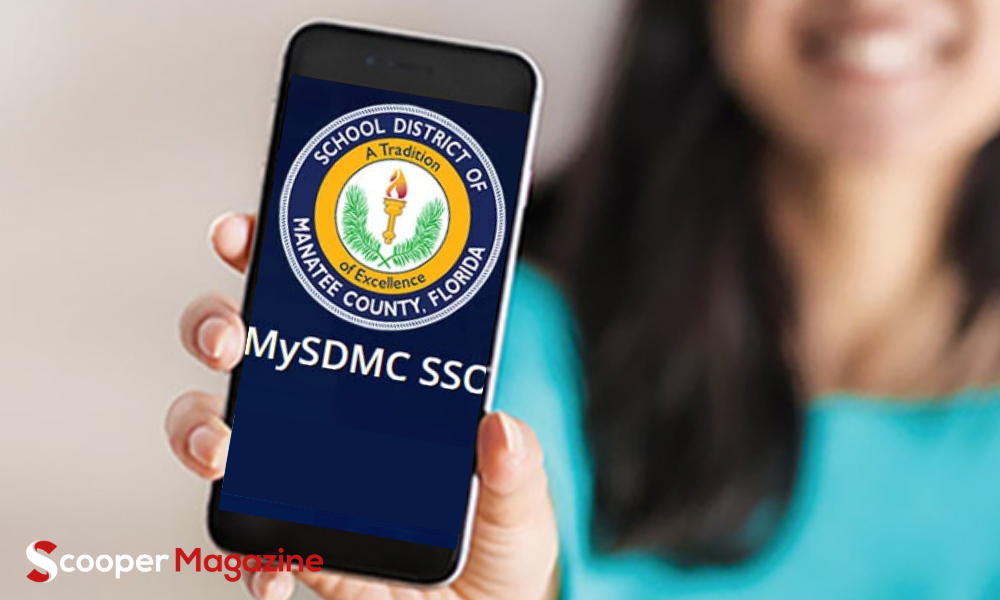NEWS
jyokyo (状況): Understanding the Deeper Meaning of “Situation” in Japanese Culture
 When you come across the Japanese word “jyokyo” (状況), it might seem like a simple translation for “situation” or “condition.” Yet, beneath that simplicity lies one of the most profound and context-rich ideas in the Japanese language.
When you come across the Japanese word “jyokyo” (状況), it might seem like a simple translation for “situation” or “condition.” Yet, beneath that simplicity lies one of the most profound and context-rich ideas in the Japanese language.
In Japan, jyokyo isn’t just about what’s happening—it’s about how it’s happening, why it’s happening, and what circumstances surround it. Understanding jyokyo means learning to read the air, sense the unspoken, and respond with awareness rather than assumption.
This article explores what jyokyo really means, how it’s used in daily life and business, why it reflects Japan’s cultural DNA, and how embracing the jyokyo mindset can transform the way we communicate and make decisions.
What Does “Jyokyo” (状況) Really Mean?
Breaking Down the Word
The word jyokyo is written in Japanese as 状況, made up of two Chinese characters (kanji):
-
状 (jō / jyō) — meaning condition, form, or state
-
況 (kyō / kyo) — meaning circumstance or situation
When combined, they create a term that refers to the state of affairs or current circumstances—but in a way that implies context, fluidity, and relationship to the surrounding environment.
In essence, jyokyo is not a frozen state; it’s a living snapshot—a situation constantly shaped by human emotions, external forces, and timing.
How Jyokyo Differs from Other Words
Japanese has several terms that might translate to “situation,” but each has its own flavor and depth:
| Word | Meaning | Nuance |
|---|---|---|
| 状態 (jōtai) | “State” or “condition” | Static, describing physical or fixed status |
| 事態 (jitai) | “Situation,” often critical | Used for emergencies or problematic scenarios |
| 現状 (genjō) | “Current condition” | Describes the status quo, often neutral |
| 状況 (jyokyo) | “Situation” or “circumstance” | Encompasses both factual and emotional context |
That’s why jyokyo stands apart — it’s dynamic, human, and situationally aware. When someone mentions jyokyo, they’re not just describing facts; they’re recognizing an environment of relationships, emotions, and timing.
Why Jyokyo Is Culturally Important in Japan
The Value of Context and Harmony
Japanese society is famously context-driven. Communication relies heavily on what is implied rather than what is explicitly said.
The concept of 空気を読む (kuuki o yomu) — literally “reading the air” — reflects this cultural trait. It means being sensitive to the mood, unspoken emotions, and social balance of the moment.
Understanding jyokyo is, in essence, reading the air with awareness. It allows speakers to reference circumstances gracefully without assigning blame or making direct confrontation.
For example:
「今の状況では難しいですね。」
“Given the current situation, it might be difficult.”
Rather than saying “No,” this phrase gently acknowledges that the conditions are not ideal — a perfect example of polite, context-driven communication.
Adaptability: A Core Japanese Strength
In both business and personal life, adapting to the jyokyo is seen as a mark of intelligence and maturity. It’s not about surrendering your will; it’s about responding appropriately to the changing environment.
From shifting markets to unexpected weather or evolving social dynamics, being aware of the jyokyo helps people adjust course gracefully — a quality deeply embedded in Japanese values of balance and resilience.
How Jyokyo Is Used in Everyday and Professional Japanese
1. In Daily Conversations
In casual speech, jyokyo often appears in questions or comments about someone’s circumstances:
-
「最近の状況はどう?」 (Saikin no jyokyo wa dō?) – “How are things going lately?”
-
「明日の状況次第で行くね。」 (Ashita no jyokyo shidai de iku ne.) – “I’ll go depending on how things look tomorrow.”
It’s a flexible phrase that can refer to health, work, relationships, or even mood.
Rather than asking directly about someone’s problems, jyokyo offers a gentle, open-ended way to show care without intrusion.
2. In Business and Formal Contexts
In corporate or political communication, jyokyo is indispensable. It provides a diplomatic way to discuss complex realities or ongoing changes.
Examples include:
-
経営の状況 (keiei no jyokyo) – business situation
-
市場の状況 (shijō no jyokyo) – market conditions
-
国際情勢の状況 (kokusai jōsei no jyokyo) – international circumstances
You’ll often hear phrases such as:
「状況を踏まえて最適な判断を下します。」
“We will make the best decision based on the current situation.”
It conveys thoughtfulness, awareness, and a willingness to adapt — all highly valued traits in Japanese professionalism.
3. In Art, Media, and Modern Culture
Writers, journalists, and digital creators often use jyokyo to describe mood and atmosphere rather than just facts.
-
In fiction: 「この状況、逃げられない。」 (This situation — there’s no escape.)
-
In social media: “This meme perfectly describes the current jyokyo of the internet.”
Here, jyokyo becomes a way to capture the emotional tone of an era, a community, or even an online trend.
Applying the “Jyokyo Mindset” in Everyday Life
You don’t need to speak Japanese to use jyokyo thinking. It’s a mindset rooted in awareness, flexibility, and empathy.
1. Pause, Observe, Then Act
Before reacting, take a moment to assess your surroundings — the people, tone, and timing. Asking yourself “What’s the jyokyo right now?” can prevent misunderstandings and hasty choices.
2. Stay Flexible
Situations evolve. By saying “depending on the situation,” you keep your approach open and respectful. This flexibility shows maturity and emotional intelligence.
3. Practice Cultural Sensitivity
In cross-cultural settings, understanding jyokyo can help you navigate differences more smoothly. It’s about tuning into others’ comfort levels and responding with tact, not force.
4. Cultivate Mindfulness
Beyond words, jyokyo is a philosophy of presence. It invites you to stay grounded, notice your environment, and respond intentionally instead of impulsively.
Global Relevance of Jyokyo
While jyokyo is distinctly Japanese, its lessons apply universally.
In global workplaces, leadership, and communication, the ability to read the situation—to understand timing, mood, and environment—is invaluable.
In fact, jyokyo awareness is a key trait of successful diplomats, negotiators, and emotionally intelligent leaders. It bridges cultural divides by focusing on context before content.
As international collaboration grows, adopting the jyokyo mindset can make you not only more effective but also more compassionate in diverse environments.
Common Mistakes When Using or Understanding Jyokyo
-
Using It Without Context
Simply repeating 「状況によって」 (“depending on the situation”) without adding detail sounds vague. Be specific where possible. -
Translating It Too Literally
Calling jyokyo just “situation” misses its emotional and contextual dimensions. Think of it as “the overall picture.” -
Forgetting Cultural Cues
In Japan, ignoring jyokyo — for example, pushing your opinion without sensing others’ reactions — can seem rude or unaware. -
Equating It With Passivity
Some outsiders think that “depending on the situation” means avoiding decisions. In reality, it means choosing the right response at the right time.
Comparative Insight: Jyokyo vs. Western Thinking
Western communication often values directness — saying exactly what you mean.
Japanese communication, shaped by jyokyo, values relational awareness — knowing what to say based on the mood, timing, and mutual understanding.
Neither is better or worse; they simply reflect different cultural logics.
Learning jyokyo thinking encourages balance — the ability to be direct and empathetic.
In leadership, for example:
-
A Western manager might say, “This plan won’t work.”
-
A Japanese manager might say, “Given the current jyokyo, this approach may be difficult.”
Both convey the same message, but the latter maintains harmony while signaling constraint — a subtle art that keeps teams aligned.
Practical Benefits of Embracing Jyokyo
-
For learners and travelers: Helps decode tone, politeness, and meaning beyond literal translation.
-
For professionals: Enhances situational judgment and improves cross-cultural communication.
-
For creatives: Offers a lens to express context, emotion, and narrative balance.
-
For personal growth: Strengthens empathy, mindfulness, and resilience under changing circumstances.
Case Studies: Jyokyo in Real Life
1. Business Negotiation
A Japanese team begins a meeting with:
「現在の状況を踏まえて…」 (“Taking into account the current situation…”)
This signals careful assessment of factors before action — showing respect for context and collaboration.
2. Everyday Example
Two friends are choosing a restaurant, but one says:
「その状況なら、家で食べよう。」 (“Given that situation, let’s eat at home.”)
It’s polite, adaptive, and considerate — typical of jyokyo thinking.
3. Global Scenario
During a crisis, a leader who embraces jyokyo awareness pauses before making statements, first understanding how employees feel and what external factors influence them.
This approach builds trust and long-term effectiveness.
Jyokyo as a Way of Living
Beyond grammar and vocabulary, jyokyo embodies a worldview — one that honors awareness, empathy, and fluidity.
It teaches us that situations aren’t static, and that understanding comes not from control but from observation and alignment.
Whether in conversation, creativity, or leadership, jyokyo reminds us:
True understanding begins with awareness of the whole picture.
Conclusion: The Power of Seeing the Whole Jyokyo
At first glance, jyokyo might look like just another word for “situation.”
But once you dive deeper, it reveals a mindset—one centered on observation, flexibility, and empathy.Understanding jyokyo means understanding the invisible threads that connect people, moments, and environments. It’s what allows Japanese communication to remain elegant, respectful, and nuanced even in complexity.
FAQs
Q1: What does jyokyo (状況) mean in Japanese?
It means “situation,” “circumstance,” or “condition,” but it also implies the emotional and environmental context surrounding an event.
Q2: Is jyokyo only used formally?
No. It’s used in both casual and professional settings—from chatting with friends to writing business reports.
Q3: How is jyokyo different from jōtai or genjō?
-
Jōtai (状態) = static state
-
Genjō (現状) = current status
-
Jyokyo (状況) = broader situation including social and emotional context
Q4: Can I use jyokyo when speaking Japanese as a beginner?
Absolutely. It’s a common, useful term, and learning its nuances will make your speech sound natural and thoughtful.
Q5: Why is understanding jyokyo important in Japanese culture?
Because Japan values harmony and contextual awareness. Recognizing jyokyo shows respect and emotional intelligence, both key to smooth relationships.
NEWS
statekaidz.com– The Ultimate Safe & Engaging Learning Platform for Kids

 statekaidz.com In today’s digital world, finding a learning platform that truly balances fun, safety, and academic value can feel like searching for a needle in a haystack. Enter StateKaidz.com: a thoughtfully designed online hub created for children between roughly 4 and 13 years old that aims to turn screen time into growth time. Whether you’re a parent looking for a trustworthy tool, an educator seeking supplemental resources, or simply someone who cares about how kids learn today, this platform stands out as a promising option.
statekaidz.com In today’s digital world, finding a learning platform that truly balances fun, safety, and academic value can feel like searching for a needle in a haystack. Enter StateKaidz.com: a thoughtfully designed online hub created for children between roughly 4 and 13 years old that aims to turn screen time into growth time. Whether you’re a parent looking for a trustworthy tool, an educator seeking supplemental resources, or simply someone who cares about how kids learn today, this platform stands out as a promising option.
What Is StateKaidz.com?
StateKaidz.com is an interactive learning platform built for young learners. Rather than simply offering passive videos or drill worksheets, it combines games, animations, quizzes, and creative activities to help children explore subjects like math, reading, science, history, art and more — all in a child‑friendly environment. The idea is to keep kids engaged and learning. As one review put it: “learning that feels like play.”
At its core, the platform emphasises three key pillars: safety, engagement, and personalization. Safety means ad‑free, no distracting pop‑ups, strong privacy protections (especially important for young users). Engagement means using gamified mechanics, visual storytelling, interactive modules to draw children in. Personalization means the platform adapts to each child’s pace and style so they aren’t held back or left behind.
Why Safety Matters & How StateKaidz.com Addresses It
In an era where children spend increasing time online, what they see — and how they are guided — matters more than ever. Many generic websites carry ads, external links, third‑party trackers, or content not curated for young users. StateKaidz.com recognises this and builds from a foundation of safety:
-
It offers a 100 % ad‑free interface, meaning fewer distractions and no commercial pop‑ups targeted at kids.
-
The site is designed to comply with key children’s privacy standards (such as COPPA in the U.S.) and to protect personal data of young users.
-
It provides parent/teacher dashboards, time‑limits, usage tracking, and clear visibility so adults remain informed and children are guided.
-
It uses interactive modules that do not rely on external ads or unsafe redirections, making it a trusted space for families.
By placing safety upfront, the platform helps parents feel more comfortable handing over control and helps children focus on learning without harmful interruptions.
How the Learning Experience Works
Personalized Learning Paths
StateKaidz.com recognises that no two children learn in exactly the same way. What works for one might bore another; what challenges one may overwhelm another. To address this, the platform uses adaptive algorithms and progress‑tracking to tailor content:
-
Short modules (often 5‑15 minutes) that children can complete at their own pace.
-
Snapshots of each child’s strengths, areas for improvement, and suggestions for next steps.
-
The freedom to revisit previous lessons, accelerate through topics they enjoy, or dwell longer on topics needing reinforcement.
Gamification & Engagement
Traditional worksheets can feel stale to many children. StateKaidz.com changes the tone by embedding reward systems, badges, challenges, animations and game‑like transitions. For example:
-
Children earn virtual badges and points when they complete lessons.
-
Learning modules might use stories, characters, puzzles, and real‑world scenarios to illustrate academic concepts.
-
Printable worksheets and offline activities support screen‑free learning, giving variety and reducing digital fatigue.
Full Curriculum & Beyond
Rather than focusing on one subject, StateKaidz.com aims for breadth and depth:
-
Math: From counting and arithmetic to fractions and geometry.
-
Reading & Writing: Vocabulary, grammar, comprehension, creative writing.
-
Science: Life science, earth & space, physics basics.
-
History & Geography: Interactive modules, state‑themed explorations, global stories.
-
Creativity & Life Skills: Arts, music, digital storytelling, social‑emotional learning (SEL).
By combining academic content with creative and life‑skills modules, the platform supports holistic development — not just test preparation.
Why Parents, Teachers & Kids Like It
For Parents
-
Visibility: See what children are doing, where they excel and where they need support.
-
Flexibility: Let children learn at home or supplement school learning.
-
Peace of Mind: With safety built‑in, fewer worries about what they might encounter online.
-
Engagement: Children enjoy using the platform, reducing resistance to learning.
For Teachers/Educators
-
Integration: Use as a station or supplement in blended classrooms.
-
Tracking: Monitor student progress and assign targeted modules.
-
Variety: Access to printable materials that support both online and offline teaching.
For Kids
-
Fun: Learning becomes play rather than a chore.
-
Recognition: Badges and rewards create a sense of achievement.
-
Autonomy: They can pick their pace, revisit modules, explore new topics.
-
Diversity: From games to storytelling, from math puzzles to cultural explorations — they won’t feel stuck in one mode.
Real‑Life Impact & Outcomes
Multiple reviews note that children using StateKaidz.com show improved engagement, better attitudes toward learning, and stronger foundational skills. For example:
-
One parent said: “My daughter used to avoid math apps, but now asks to play math games during dinner time.”
-
Educators report that modules aligned with curriculum standards help reinforce classroom lessons and improve performance.
Beyond raw academic gains, the platform also helps foster self‑confidence, curiosity, independence, and digital literacy — skills important for the 21st‑century learner.
Membership, Access & Pricing
StateKaidz.com offers several access tiers, typically including:
-
A free trial so families can test the platform risk‑free.
-
A monthly paid plan for a single child.
-
A family plan covering multiple children under one account.
-
A school/educator plan with broader access, group tracking, and classroom‑friendly features.
The exact pricing may change over time, but the structure is designed to make high‑quality digital learning accessible and scalable.
Best Practices: How to Get the Most Out of StateKaidz.com
To maximise value and ensure children truly benefit, consider these tips:
-
Set a short daily time frame (e.g., 20‑30 minutes) rather than a long marathon session.
-
Combine digital lessons with offline activities: Use the printable worksheets, encourage writing, drawing, or hands‑on projects.
-
Monitor progress: Review the parent dashboard weekly. Celebrate wins and offer support for weak areas.
-
Encourage exploration: Let the child pick topics that interest them — whether it’s space science, storytelling or coding — to foster intrinsic motivation.
-
Balance screen time: Even though the platform is educational, ensure there are breaks, outdoor play, reading time or physical activity.
-
Use the learning features in context: For example, if the child is struggling in school on a topic, assign a module in StateKaidz.com to reinforce that concept.
-
Celebrate milestones: Use the badges and achievements as opportunities for positive reinforcement; this builds confidence and a positive attitude toward learning.
Common Questions & Considerations
-
Is StateKaidz.com only for younger children?
While the primary target is ages 4‑13 (or 5‑14 depending on source), the flexibility and range of modules allow older kids to pick up and explore new skills. -
Does it replace school?
No. It is designed to supplement school learning, enrich skills, and offer engaging practice — not to completely replace classroom instruction. -
Does it work offline?
Most modules require internet access; however, the platform offers printable worksheets and offline activities to reduce dependence on screens -
Is it safe for children?
Yes — the platform emphasises child safety, ad‑free experience, COPPA‑compliance, parental controls and secure interfaces. -
What if a child isn’t engaged?
Choose modules aligned with their interests (e.g., interactive stories, coding games, art‑based modules). Encourage short, consistent sessions rather than long ones. Use the reward badges as motivation.
Looking Ahead: What’s Next for StateKaidz.com
The educational technology space is evolving rapidly, and StateKaidz.com appears poised to grow. Some future directions include:
-
Launching mobile‑apps for iOS and Android for learning on the go.
-
Expanding multilingual content or regional/ international versions beyond English‑only.
-
Integrating live sessions or virtual classrooms for group interaction and mentorship.
-
Enhancing career‑oriented modules for older kids (e.g., coding, digital entrepreneurship, environmental science).
-
Broadening reach to underserved regions with limited internet access, by offering offline‑capable modules.
Final Thoughts
If you’re looking for an educational platform that genuinely blends the joy of discovery with substance, StateKaidz.com is a strong contender. It doesn’t simply deliver lessons — it creates an environment where children feel safe, encouraged, challenged, and rewarded. By combining core academics with creativity, life skills and technological literacy, it supports not only what children learn — but how they learn.
NEWS
luxury villas italy le collectionist: The Ultimate Guide to Italian Elegance

 luxury villas italy le collectionist Imagine stepping off a private car in the Tuscan countryside, greeted by rolling vineyards, golden light and the doors of your own exclusive villa swinging open. That’s the kind of escape offered by luxury villas Italy Le Collectionist. Beyond mere accommodation, it’s a full immersion into la dolce vita—with top-tier comfort, bespoke service and the charm of Italy’s finest homes.
luxury villas italy le collectionist Imagine stepping off a private car in the Tuscan countryside, greeted by rolling vineyards, golden light and the doors of your own exclusive villa swinging open. That’s the kind of escape offered by luxury villas Italy Le Collectionist. Beyond mere accommodation, it’s a full immersion into la dolce vita—with top-tier comfort, bespoke service and the charm of Italy’s finest homes.
Whether you’re travelling with family, friends or a multi-generational group, these villas redefine “holiday home”. With more than 170 Italian villas in their portfolio, Le Collectionist brings together hand-picked estates in iconic regions—from Lake Como to the Amalfi Coast, from Sicily to Puglia.
From the moment you book to the minute you depart, the experience is personalised, luxurious, and deeply Italian. Read on to explore how Le Collectionist delivers and what you should know before you go.
Why choose Le Collectionist for luxury villas in Italy
Choosing a villa rental is easy; choosing one backed by a luxury-concierge brand like Le Collectionist is a game-changer. Here’s why:
-
Curated selection – Every villa in the portfolio is vetted for quality, location, design and service. Le Collectionist describes it: “Each house in our collection is a match between our criteria of excellence and a love at first sight.
-
360° service – More than a booking platform, you receive personalised travel advice, local concierges, optional in-villa chefs, wellness staff and tailored experiences.
-
Global reputation & trust – As a B Corp certified company, Le Collectionist demonstrates commitment not just to luxury, but to authenticity, sustainability and responsible travel.
-
Italian-tailored expertise – With villas across Italy’s prime destinations, they know local culture, logistics and hidden gems—so you don’t just “stay in Italy”, you live it.
In short: when you search for luxury villas Italy Le Collectionist, you’re looking for more than four walls and a pool—you’re looking for an elevated stay that blends place, comfort and service.
Regions & destinations: luxury villas Italy Le Collectionist covers
Le Collectionist spans some of Italy’s most desirable villa-destinations. Here are major regions you should consider:
Tuscany
Think gentle hills, vineyard-lined estates, stone farmhouses and a slow, luxurious pace. The Toscano villas offer serenity, wine tasting, countryside drives and art-filled towns.
Amalfi Coast
Cliffside villas overlooking azure seas, lemon groves, private funiculars—this is the glamour of Italy. Villas by Le Collectionist on the Amalfi Coast allow you to stay above Positano or Ravello with sweeping views.
Lake Como
Majestic villas, docked boats, historic facades and lakeside elegance. For those seeking refined calm and aristocratic style, villas here are unbeatable.
Puglia & Sicily
Rustic meets luxury. In Puglia you’ll find trulli houses and olive-grove estates; in Sicily, ancient walls meet modern comforts with beach access and rich culture.
Sardinia & Other Hidden Gems
For beach lovers wanting exclusivity, Sardinia offers private-beach villas and high-end seclusion. Italy’s leading luxury-villa agency makes sure even these off-beat regions are covered.
Signature villa features: what sets these properties apart
What distinguishes the luxury villas Italy Le Collectionist from regular holiday homes? Here are standout features:
-
Designer interiors – Thoughtfully furnished with local artisan touches, antique elements or ultra-modern décor. The blend of authentic Italian architecture with modern luxury is key.
-
Private pools & gardens – Infinity pools facing vineyards or sea, manicured gardens, olive groves, outdoor dining under cypress trees.
-
Secluded locations – Privacy is premium. Many villas offer direct beach access, boat docks, outdoor cinema or multiple terraces so your group has space and retreat.
-
High-end amenities – Think spa rooms, home cinemas, wine cellars, chef’s kitchens, helipads or private docks. The aim is not just luxury but bespoke comfort.
-
Fully staffed options – Housekeepers, chefs, butlers, sometimes kids clubs—depending on villa and budget. The size of your group and stay-style influences the level of service.
Tailor-made services & concierge experience with Le Collectionist
The villa is just the beginning. What truly elevates your holiday is the concierge layer:
-
Personal advisor – From first contact you’ll be matched to a specialist who understands your group size, preferences, children, pets or special events.
-
Custom itineraries – Wine tastings in Chianti, yacht charter along the Amalfi cliffs, truffle hunts in Sicily, private chef dinners under the stars—they craft experiences, not just stays.
-
Logistics handled – Transfers, airport pickup, driver service, grocery stock-ups on arrival, babysitting or in-villa wellness sessions—they aim for zero stress.
-
24/7 support – Local teams are available round the clock to ensure your stay flows seamlessly.
This means when you book with luxury villas Italy Le Collectionist, you’re paying for peace of mind, not just property.
Booking tips and how to select the perfect villa
To maximize your stay and value, keep these in mind:
-
Define your purpose – Romance, family reunion, friends trip, celebration? The group’s purpose changes region, size and amenities.
-
Set your must-haves – Pool? Beach access? Pet friendly? Staff included? Share these early.
-
Book early – Summer and key holidays fill fast. The best villas often go 12-18 months in advance.
-
Be flexible with dates – Shoulder seasons (May-June, September) offer lower rates and fewer crowds.
-
Understand costs – Price depends on region, size, season, staffing. Some listings list from ~€4,000/week in off-season, while flagship villas in peak summer can exceed €30,000/week.
-
Check service details – What’s included in the rental? What requires extras? Clarify before booking.
-
Ask about local experiences – A villa is amazing on its own, but the memories come from what you do there.
When to visit Italy & seasonal considerations
Timing matters when it comes to luxury villas Italy Le Collectionist:
-
Spring (April–June): Mild weather, blooming landscapes, ideal for countryside villas, fewer crowds.
-
Summer (July–August): Peak beach season, hot weather, busiest tourist spots. If you’re aiming for Amalfi or Lake Como, this is it.
-
Early Autumn (September–October): Harvest time, pleasant temperatures, great for wine regions and food lovers.
-
Off-season (November–March): For ski destinations or quiet retreats, but some villas may reduce staffing or amenities.
Location-specific:
-
Beach villas shine in summer.
-
Countryside villas offer superb value in the shoulder season.
-
Northern Italy villas may be cooler early spring or late autumn.
Sustainability, authenticity and the future of luxury villas Italy Le Collectionist
Luxury today is not just about opulence—it’s about conscious travel. Le Collectionist’s B Corp certification underscores this commitment.
Some actions:
-
Emphasis on local sourcing (food, staff, experiences)
-
Eco-friendly features in some villas (solar panels, energy-efficient systems)
-
Supporting regional craft, architecture and heritage
The future of luxury villas in Italy lies in melding authenticity with refined ease—staying in homes that feel part of place, not just detached luxury pods.
Real guest experiences and highlights of villas by Le Collectionist in Italy
Here are a couple of standout examples:
-
Villa San Martino – Tuscany
A restored 15th-century monastery with private chapel, wine cellar over 500 bottles, infinity pool overlooking vineyards. -
Villa Positano Dream – Amalfi Coast
Perched above the sea, direct beach access via funicular, spa suite, home cinema. -
Villa Como Elegante – Lake Como
Belle Époque architecture, lake-front terrace, private boat dock with classic wooden boats.
Guests often highlight: panoramic views, staff services, freedom to relax, and the seamless blend of local culture with luxury.
Cost expectations, value and what you get
While luxury comes at a premium, the value is in the experience.
Average range by region (indicative):
-
Puglia & Sicily: from ~€4,000-€15,000/week (off-peak to mid)hb
-
Tuscany & Amalfi: from ~€8,000-€25,000/week depending on size & season
-
Lake Como and ultra-exclusive estates: can exceed €30,000+ per week
What you get: private home, premium setting, staff/concierge services, top amenities, curated experiences.
Budgeting tip: allocate 20-30% of your overall travel spend for villa + services; the rest for flights, experiences, meals off-site.
Conclusion: luxury villas Italy Le Collectionist and your next escape
When you choose luxury villas Italy Le Collectionist, you’re choosing not just a place to stay—but a story to live. One where historic estates meet modern elegance, where your every desire can be crafted into an experience, and where Italy isn’t just visited—it’s felt.
From sun-lit terraces in the Chianti hills, to clifftop pools above the Mediterranean, to lakeside elegance nestled in centuries of tradition—your luxury villa holiday awaits.
Picture it. Book it. Live it.
FAQs
Q1: What makes “luxury villas Italy Le Collectionist” different from standard villa rentals?
A1: The combination of hand-picked properties, full concierge service, high-end amenities and support throughout your stay.
Q2: Which regions in Italy do they cover?
A2: Major destinations include Tuscany, Amalfi Coast, Lake Como, Puglia, Sicily and Sardinia.
Q3: Are these villas suitable for families and large groups?
A3: Yes, many villas are designed for families or groups, offering multiple bedrooms, staff, and kid-friendly services.
Q4: What services are included?
A4: Services vary by villa but can include private chef, housekeeping, in-villa wellness, drivers, curated local experiences, 24/7 concierge.
Q5: How far in advance should I book a luxury villa in Italy?
A5: For the best selections—especially during peak summer—aim for 6-12 months ahead. Shoulder seasons offer more availability.
NEWS
mysdmc sso: A Human-Friendly Guide to Simplified School Login

 mysdmc sso In today’s fast-moving digital world, students, teachers and parents often juggle several logins—email accounts, learning platforms, grade-check sites, and more. That’s where mySDMC SSO comes in: a streamlined Single Sign-On (SSO) portal for the School District of Manatee County (SDMC) in Florida. It means logging in once, then accessing a suite of apps with ease. In this article, we’ll explore what mySDMC SSO is, how it works, its core benefits, how to get started, and how it supports student success and digital safety.
mysdmc sso In today’s fast-moving digital world, students, teachers and parents often juggle several logins—email accounts, learning platforms, grade-check sites, and more. That’s where mySDMC SSO comes in: a streamlined Single Sign-On (SSO) portal for the School District of Manatee County (SDMC) in Florida. It means logging in once, then accessing a suite of apps with ease. In this article, we’ll explore what mySDMC SSO is, how it works, its core benefits, how to get started, and how it supports student success and digital safety.
What is mySDMC SSO?
mySDMC SSO stands for My School District of Manatee County Single Sign-On. It is the authentication gateway that allows SDMC students, teachers and staff to access multiple educational resources and tools using one set of credentials.
Instead of logging separately into platforms like Focus (student information system), Canvas (learning management system), Google Workspace, Microsoft 365, and more, users sign into the mySDMC SSO portal and reach those tools from a unified dashboard.
Why it matters: Benefits of mySDMC SSO
1. Efficiency & convenience
Students no longer have to remember multiple usernames and passwords for each app—they log into mySDMC SSO once and get redirected to all connected tools.
2. Security and compliance
By centralising authentication, the district can enforce stronger password policies, monitor access centrally, support features like QuickCard login for younger students, and reduce risks linked to password fatigue.
3. Better access for parents and guardians
Parents can more easily track their child’s grades, attendance and assignments via apps linked through the portal, making engagement smoother and more transparent.
4. Learner-friendly and mobile ready
Since many students use tablets and Chromebooks, mySDMC SSO supports mobile access and offers an intuitive dashboard that fits modern devices and workflows.
5. Supports digital-learning ecosystems
With remote and hybrid learning becoming more common, a strong SSO platform like mySDMC SSO underpins the district’s ability to deliver consistent digital education.
How to Use mySDMC SSO: Step-by-Step
Here’s how students, staff, and parents can get started:
-
Visit the portal: Typically via or the district’s login link.
-
Enter credentials: Students use their student ID or district-issued username and password; staff use their district account.
-
First-time login may require password change or accepting terms.
-
Once logged in, launch the relevant app (Focus, Canvas, Google, Microsoft, etc.).
-
For younger students, QuickCard or QR-badge login options may be available.
-
To logout, use the sign-out link—especially on shared devices—to protect security.
Tips & Best Practices
-
Keep credentials safe: Don’t share your password or QuickCard with others.
-
Use supported browsers/devices: Ensure your browser is up-to-date; some login issues stem from outdated software.
-
Clear your cache if you encounter issues: Login problems often resolve when browser history/cookies are cleared.
-
Enable any available security options: If the district offers Multi-Factor Authentication (MFA), it’s a wise step.
-
Use the dashboard to your advantage: Pin the apps you use frequently, organise your view, and stay efficient.
-
Log out on public/shared devices: Prevent unwanted access by always signing out.
-
The Role of mySDMC SSO in Modern Education
By simplifying access, mySDMC SSO isn’t just a technical tool—it influences learning culture. It encourages digital literacy, enables faster adaptation to new platforms, empowers students to take control of their tools, and frees teachers from login logistics so they can focus on teaching. As schools continue embracing blended and remote models, platforms like mySDMC SSO become central infrastructure—linking people, data and tools in one secure place.
Conclusion
The mySDMC SSO portal is more than a login screen—it’s a gateway to streamlined learning, improved security, and smoother communication among students, teachers and parents in the Manatee County School District. If you’re part of the SDMC community, mastering this portal means less time wrestling with passwords and more time focused on education. With one set of credentials, you’re connected—ready to learn, teach or support.
FAQS
Q: I forgot my password—what do I do?
A: Use the “Forgot Password” link on the login page, or contact your school’s IT help desk.
Q: Can parents log into mySDMC SSO?
A: Parents typically access student-data apps (e.g., Focus) via linked portals—not always via the student SSO directly.
Q: Why can’t I access an app after login?
A: Ensure you’re logging out properly, using a compatible browser, and wait a moment after login for the app icons to load. If issues persist, contact IT support.
Q: Is the portal mobile friendly?
A: Yes—mySDMC SSO supports mobile browsers and the ClassLink LaunchPad app for iOS and Android.
-

 CELEBRITY9 months ago
CELEBRITY9 months agoWho Is Jasmine Gong? Everything You Should Know About Brad Williams’ Wife
-

 CELEBRITY9 months ago
CELEBRITY9 months agoMatt Danzeisen: The Influential Yet Low-Key Force Behind Peter Thiel’s Success
-

 CELEBRITY9 months ago
CELEBRITY9 months agoWho Is Amelia Jane Henson? Everything You Need to Know About Mia Sara and Brian Henson’s Daughter
-

 CELEBRITY9 months ago
CELEBRITY9 months agoWho Is Gianluca Cugnetto? Everything You Need to Know About Hannah Waddingham’s Ex-Husband
-

 CELEBRITY9 months ago
CELEBRITY9 months agoRachel Catudal: Everything You Need to Know About Brandon Quinn’s Wife
-

 CELEBRITY9 months ago
CELEBRITY9 months agoWho Is Erika Tureaud? All You Need to Know About Mr. T’s Daughter
-

 CELEBRITY9 months ago
CELEBRITY9 months agoWho Is Joe Alfie Winslet Mendes? Everything You Should Know About Kate Winslet’s Son
-

 LATEST9 months ago
LATEST9 months agoWho Is Otelia Cox? Everything to Know About Tony Cox’s Wife



